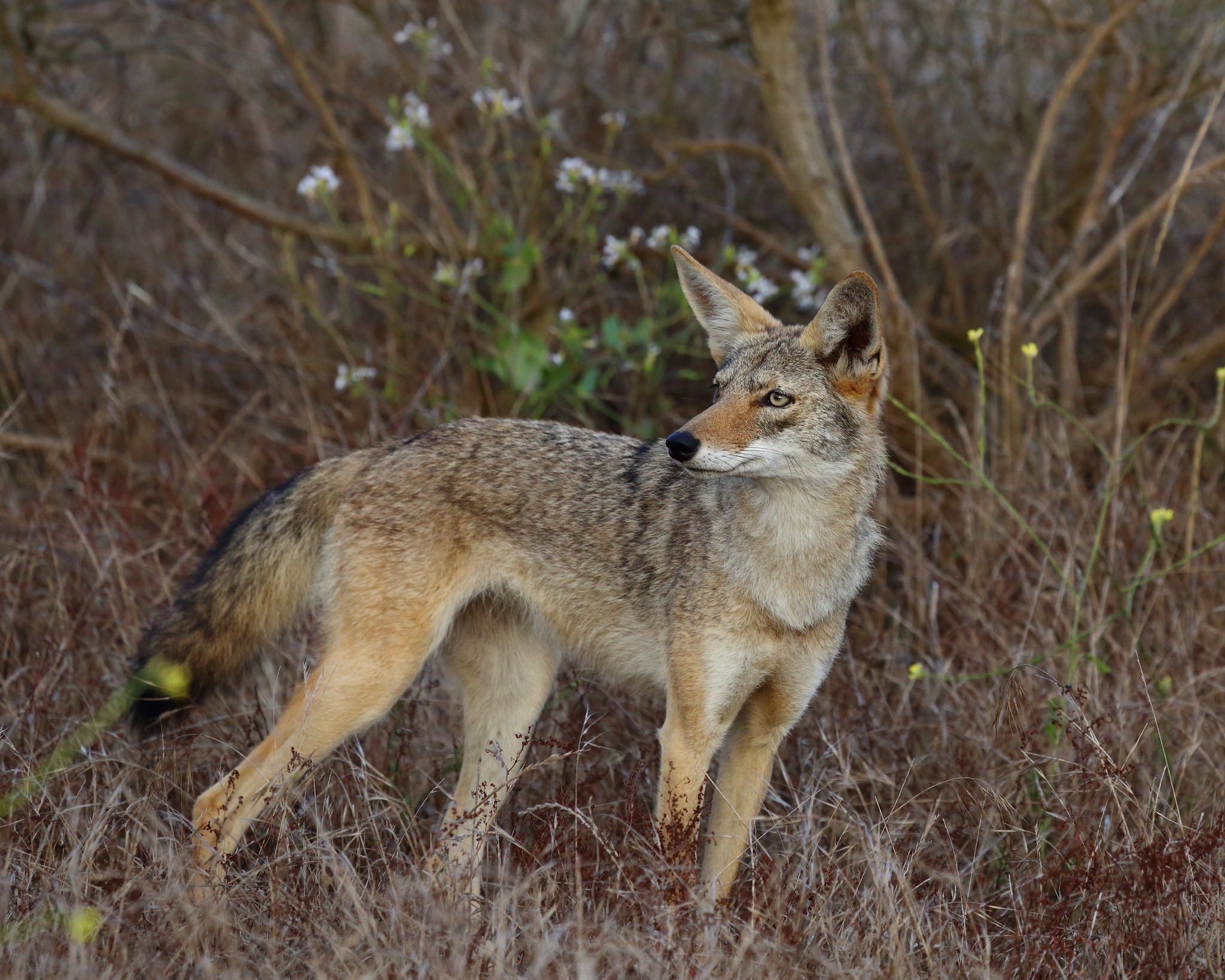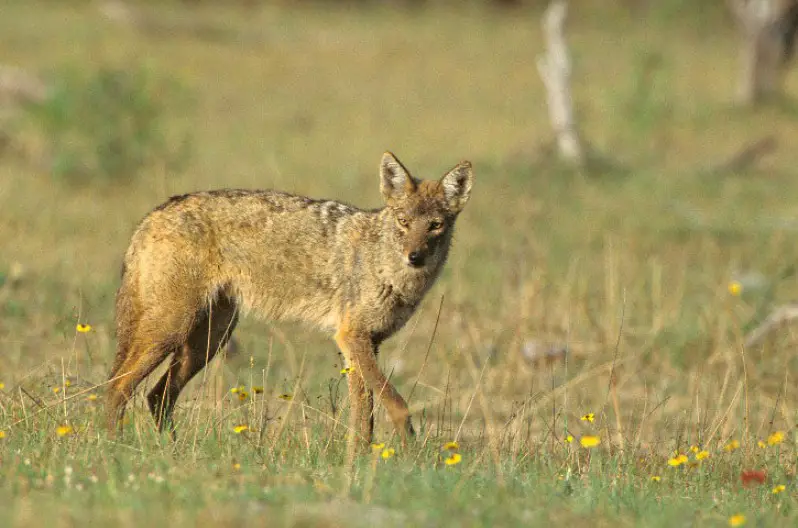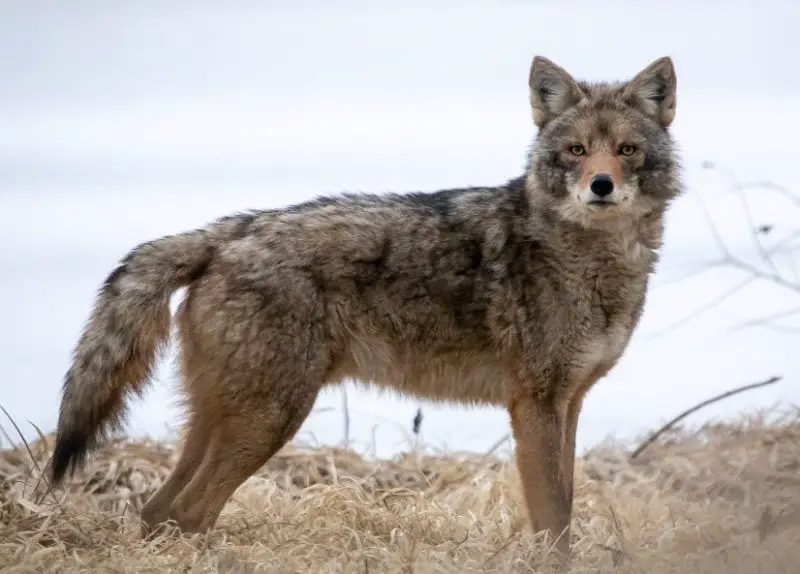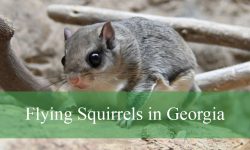Coyotes in Texas are among the most adaptable and widespread predators in the state. From open plains to desert landscapes and even urban neighborhoods, these intelligent canines have made themselves at home across a wide range of environments. Their ability to thrive in both wild and human-populated areas makes them a fascinating subject for wildlife observers and residents alike.
There are several types or variations of coyotes in Texas, each shaped by the region they inhabit. Whether it’s the resilient Desert Coyote of West Texas or the cunning Urban Coyote seen near major cities, each type shows unique physical traits, behaviors, and survival strategies. Learning to identify these coyotes can help you better understand their role in Texas’s ecosystems.
In this guide, we’ll explore 4 common coyotes in Texas with detailed pictures and identification tips. You’ll learn how to recognize each type, where they’re most commonly found, and how they interact with their surroundings.
Common Coyotes Found in Texas
Plains Coyote (Canis latrans latrans)

The Plains Coyote is the most common type found throughout central and northern Texas, especially in regions with open grasslands and farmland. This coyote is medium-sized, typically weighing between 25 to 40 pounds, with a slender build, long legs, and a bushy tail. Its fur is usually a blend of gray, light brown, and some reddish hues, often with a white underbelly and a black-tipped tail. The ears are pointed and upright, giving it a sharp, alert expression.
Behaviorally, Plains Coyotes are known for being highly adaptable and opportunistic. They are primarily nocturnal but can be active during the early morning or late evening. Their diet includes a wide range of prey such as rabbits, rodents, birds, reptiles, insects, and even fruit or carrion. They are skilled hunters and may work alone or in small family units. These coyotes are also known for their loud vocalizations—yelps, howls, and barks—that help them communicate with others over long distances.
In Texas, the Plains Coyote thrives in areas like the Panhandle, North Central Texas, and parts of the Hill Country, where open land and agricultural activity offer both cover and a reliable food supply. They avoid dense forests or swampy regions but do well in prairie and brushland habitats. Their ability to survive in both wild and semi-developed areas makes them a persistent presence across rural and suburban parts of the state.
Desert Coyote (Canis latrans mearnsi)

The Desert Coyote is smaller and more lightly built than its Plains counterpart, typically weighing between 20 and 30 pounds. It is well-suited to the harsh, arid climates of West Texas, especially in the Trans-Pecos region near Big Bend National Park and the Chihuahuan Desert. Its fur tends to be paler—light tan or sandy gray—which helps it blend into desert and scrub landscapes. They often have a narrower snout and larger ears to help dissipate heat.
These coyotes are highly nocturnal, conserving energy during the hot daytime and becoming active after dusk. They are stealthy and elusive, relying on their keen hearing and sense of smell to locate prey. Their diet includes jackrabbits, desert rodents, lizards, insects, and even cactus fruit when other food sources are scarce. Unlike coyotes in wetter regions, desert coyotes can survive long periods with little water, obtaining moisture through their food.
Desert Coyotes prefer wide-open, dry environments with sparse vegetation, such as mesquite brush, rocky hillsides, and desert flats. Their range in Texas is concentrated in Jeff Davis, Brewster, and Presidio counties, though they may wander into adjacent regions depending on food availability. Despite the tough conditions, these coyotes are remarkably resilient and are well-adapted to desert life.
Texas Plains Coyote (Regional Variant)

The Texas Plains Coyote is not a distinct subspecies but represents a regional variation of the common coyote found in northwestern Texas, particularly in areas like the Llano Estacado and parts of the Rolling Plains. These coyotes often display characteristics of both Plains and Desert Coyotes, forming a hybrid-like population adapted to the semi-arid environments of the western interior of the state.
This variant may appear slightly larger than desert coyotes, with a body weight ranging from 30 to 45 pounds. The coat is often coarse and ranges from tan-gray to rusty brown, sometimes showing a mix of dark patches along the back. They are agile runners, capable of covering long distances in search of prey and territory. During cooler months, their fur thickens and becomes more pronounced to insulate against wind and sudden cold snaps.
Texas Plains Coyotes are primarily carnivorous, feeding on small mammals like prairie dogs, ground squirrels, and field mice. They also eat birds, snakes, and carrion, and are known to raid chicken coops or livestock pens if food is scarce. They live in territories marked by scent and vocal calls and may form small, temporary packs. This regional population is most comfortable in open plains, dry riverbeds, and areas with scattered brush, avoiding denser woodlands.
Urban Coyotes

Urban Coyotes are a behavioral and ecological adaptation rather than a subspecies, and they have become increasingly common in Texas cities like Dallas, Austin, Houston, and San Antonio. These coyotes have adapted to living in close proximity to humans, often residing in green belts, parks, drainage ditches, and even golf courses or vacant lots. Though they look similar to rural coyotes—typically grayish-brown with a slim build—they tend to be smaller on average, often due to limited space and food competition.
Urban Coyotes are highly secretive and primarily nocturnal to avoid human activity. They scavenge more than hunt, feeding on garbage, pet food, rodents, roadkill, and small domestic animals like cats or small dogs. Despite their closeness to urban life, they retain natural wariness and are rarely aggressive toward humans unless cornered or threatened. Some individuals may become habituated, especially if people intentionally or unintentionally feed them.
In Texas, urban coyotes are especially visible in suburban sprawl areas where development borders natural habitat. They play a role in controlling rodent populations but can cause conflict if they prey on pets or become too bold. Wildlife officials often recommend securing trash bins, not feeding animals outdoors, and hazing coyotes that come too close to prevent habituation. These adaptable creatures are a growing part of Texas’s urban ecosystem and demonstrate just how well coyotes can thrive in human-altered landscapes.
How to Identify Coyotes in Texas
Identifying coyotes in Texas involves observing several key physical and behavioral traits that distinguish them from other similar animals. While coyotes can vary slightly depending on their region, there are common features to look for across all types.
Key Identification Tips Across Types
Coyotes generally have a slender, medium-sized build, typically weighing between 20 and 45 pounds. They stand about 20 to 24 inches tall at the shoulder and measure around 3 to 4 feet from nose to tail tip. Their fur color ranges from grayish-brown to tan or reddish, often with a mix of darker and lighter patches. A distinctive feature is their bushy tail with a black tip, usually held low when running or walking.
Their faces are narrow with pointed ears that stand erect, giving them a sharp and alert expression. Unlike wolves, coyotes have a more slender muzzle and smaller overall size. Their eyes tend to be yellow or amber, often shining brightly at night.
Behaviorally, coyotes are very vocal and communicate using a variety of howls, yips, barks, and yelps. They are mostly nocturnal or crepuscular (active at dawn and dusk), which can help with spotting them during low-light hours.
Differences Between Coyotes and Similar Animals
Coyotes vs. Wolves: Wolves are larger and more robust, weighing 50 to 110 pounds or more, with broader heads and shorter ears compared to coyotes. Wolves’ fur is often denser and less varied in color, typically gray, white, or black. Wolves hold their tails straight out or down, whereas coyotes often carry their tails low with a distinct black tip. Wolf howls tend to be deeper and longer, while coyote vocalizations are higher-pitched and more varied.
Coyotes vs. Foxes: Foxes are smaller and more delicate, weighing only 8 to 15 pounds, with proportionally larger ears and bushier tails. Their fur colors vary widely, including red, gray, and silver, but their faces appear more pointed and “fox-like.” Foxes tend to have a more playful and curious behavior and are less likely to howl; instead, they produce high-pitched barks or screeches.
By focusing on these physical and behavioral characteristics, you can confidently identify coyotes in Texas and tell them apart from wolves, foxes, or domestic dogs. Observing their habitat and activity patterns will also help confirm your sightings.






